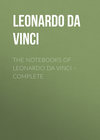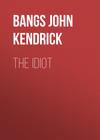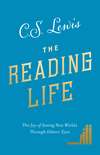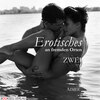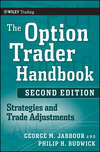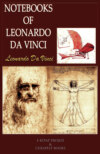Kitabı oku: «The Notebooks of Leonardo Da Vinci. Complete», sayfa 21
535
WHY OF TWO OBJECTS OF EQUAL SIZE A PAINTED ONE WILL LOOK LARGER THAN A SOLID ONE.
The reason of this is not so easy to demonstrate as many others. Still I will endeavour to accomplish it, if not wholly, at any rate in part. The perspective of diminution demonstrates by reason, that objects diminish in proportion as they are farther from the eye, and this reasoning is confirmed by experience. Hence, the lines of sight that extend between the object and the eye, when they are directed to the surface of a painting are all intersected at uniform limits, while those lines which are directed towards a piece of sculpture are intersected at various limits and are of various lengths. The lines which are longest extend to a more remote limb than the others and therefore that limb looks smaller. As there are numerous lines each longer than the others—since there are numerous parts, each more remote than the others and these, being farther off, necessarily appear smaller, and by appearing smaller it follows that their diminution makes the whole mass of the object look smaller. But this does not occur in painting; since the lines of sight all end at the same distance there can be no diminution, hence the parts not being diminished the whole object is undiminished, and for this reason painting does not diminish, as a piece of sculpture does.
On the choice of a position (536-537)
536
HOW HIGH THE POINT OF SIGHT SHOULD BE PLACED.
The point of sight must be at the level of the eye of an ordinary man, and the farthest limit of the plain where it touches the sky must be placed at the level of that line where the earth and sky meet; excepting mountains, which are independent of it.
537
OF THE WAY TO DRAW FIGURES FOR HISTORICAL PICTURES.
The painter must always study on the wall on which he is to picture a story the height of the position where he wishes to arrange his figures; and when drawing his studies for them from nature he must place himself with his eye as much below the object he is drawing as, in the picture, it will have to be above the eye of the spectator. Otherwise the work will look wrong.
The apparent size of figures in a picture (538-539)
538
OF PLACING A FIGURE IN THE FOREGROUND OF A HISTORICAL PICTURE.
You must make the foremost figure in the picture less than the size of nature in proportion to the number of braccia at which you place it from the front line, and make the others in proportion by the above rule.
539
PERSPECTIVE.
You are asked, O Painter, why the figures you draw on a small scale according to the laws of perspective do not appear—notwithstanding the demonstration of distance—as large as real ones—their height being the same as in those painted on the wall.
And why [painted] objects seen at a small distance appear larger than the real ones?
The right position of the artist, when painting, and of the spectator (540-547)
540
OF PAINTING.
When you draw from nature stand at a distance of 3 times the height of the object you wish to draw.
541
OF DRAWING FROM RELIEF.
In drawing from the round the draughtsman should so place himself that the eye of the figure he is drawing is on a level with his own. This should be done with any head he may have to represent from nature because, without exception, the figures or persons you meet in the streets have their eyes on the same level as your own; and if you place them higher or lower you will see that your drawing will not be true.
542
WHY GROUPS OF FIGURES ONE ABOVE ANOTHER ARE TO BE AVOIDED.
The universal practice which painters adopt on the walls of chapels is greatly and reasonably to be condemned. Inasmuch as they represent one historical subject on one level with a landscape and buildings, and then go up a step and paint another, varying the point [of sight], and then a third and a fourth, in such a way as that on one wall there are 4 points of sight, which is supreme folly in such painters. We know that the point of sight is opposite the eye of the spectator of the scene; and if you would [have me] tell you how to represent the life of a saint divided into several pictures on one and the same wall, I answer that you must set out the foreground with its point of sight on a level with the eye of the spectator of the scene, and upon this plane represent the more important part of the story large and then, diminishing by degrees the figures, and the buildings on various hills and open spaces, you can represent all the events of the history. And on the remainder of the wall up to the top put trees, large as compared with the figures, or angels if they are appropriate to the story, or birds or clouds or similar objects; otherwise do not trouble yourself with it for your whole work will be wrong.
543
A PICTURE OF OBJECTS IN PERSPECTIVE WILL LOOK MORE LIFELIKE WHEN SEEN FROM THE POINT FROM WHICH THE OBJECTS WERE DRAWN.
If you want to represent an object near to you which is to have the effect of nature, it is impossible that your perspective should not look wrong, with every false relation and disagreement of proportion that can be imagined in a wretched work, unless the spectator, when he looks at it, has his eye at the very distance and height and direction where the eye or the point of sight was placed in doing this perspective. Hence it would be necessary to make a window, or rather a hole, of the size of your face through which you can look at the work; and if you do this, beyond all doubt your work, if it is correct as to light and shade, will have the effect of nature; nay you will hardly persuade yourself that those objects are painted; otherwise do not trouble yourself about it, unless indeed you make your view at least 20 times as far off as the greatest width or height of the objects represented, and this will satisfy any spectator placed anywhere opposite to the picture.
If you want the proof briefly shown, take a piece of wood in the form of a little column, eight times as high as it is thick, like a column without any plinth or capital; then mark off on a flat wall 40 equal spaces, equal to its width so that between them they make 40 columns resembling your little column; you then must fix, opposite the centre space, and at 4 braccia from the wall, a thin strip of iron with a small round hole in the middle about as large as a big pearl. Close to this hole place a light touching it. Then place your column against each mark on the wall and draw the outline of its shadow; afterwards shade it and look through the hole in the iron plate.
[Footnote: In the original there is a wide space between lines 3 and 4 in which we find two sketches not belonging to the text. It is unnecessary to give prominence to the points in which my reading differs from that of M. RAVAISSON or to justify myself, since they are all of secondary importance and can also be immediately verified from the photograph facsimile in his edition.]
544
A diminished object should be seen from the same distance, height and direction as the point of sight of your eye, or else your knowledge will produce no good effect.
And if you will not, or cannot, act on this principle—because as the plane on which you paint is to be seen by several persons you would need several points of sight which would make it look discordant and wrong—place yourself at a distance of at least 10 times the size of the objects.
The lesser fault you can fall into then, will be that of representing all the objects in the foreground of their proper size, and on whichever side you are standing the objects thus seen will diminish themselves while the spaces between them will have no definite ratio. For, if you place yourself in the middle of a straight row [of objects], and look at several columns arranged in a line you will see, beyond a few columns separated by intervals, that the columns touch; and beyond where they touch they cover each other, till the last column projects but very little beyond the last but one. Thus the spaces between the columns are by degrees entirely lost. So, if your method of perspective is good, it will produce the same effect; this effect results from standing near the line in which the columns are placed. This method is not satisfactory unless the objects seen are viewed from a small hole, in the middle of which is your point of sight; but if you proceed thus your work will be perfect and will deceive the beholder, who will see the columns as they are here figured.
Here the eye is in the middle, at the point a and near to the columns.
[Footnote: The diagram which stands above this chapter in the original with the note belonging to it: "a b e la ripruova" (a b is the proof) has obviously no connection with the text. The second sketch alone is reproduced and stands in the original between lines 22 and 23.]
545
If you cannot arrange that those who look at your work should stand at one particular point, when constructing your work, stand back until your eye is at least 20 times as far off as the greatest height and width of your work. This will make so little difference when the eye of the spectator moves, that it will be hardly appreciable, and it will look very good.
If the point of sight is at t you would make the figures on the circle d b e all of one size, as each of them bears the same relation to the point t. But consider the diagram given below and you will see that this is wrong, and why I shall make b smaller than d e [Footnote 8: The second diagram of this chapter stands in the original between lines 8 and 9.].
It is easy to understand that if 2 objects equal to each other are placed side by side the one at 3 braccia distance looks smaller than that placed at 2 braccia. This however is rather theoretical than for practice, because you stand close by [Footnote 11: Instead of 'se preso' (=sie presso) M. RAVAISSON reads 'sempre se' which gives rise to the unmeaning rendering: 'parceque toujours …'].
All the objects in the foreground, whether large or small, are to be drawn of their proper size, and if you see them from a distance they will appear just as they ought, and if you see them close they will diminish of themselves.
[Footnote 15: Compare No. 526 line 18.] Take care that the vertical plan on which you work out the perspective of the objects seen is of the same form as the wall on which the work is to be executed.
546
OF PAINTING.
The size of the figures represented ought to show you the distance they are seen from. If you see a figure as large as nature you know it appears to be close to the eye.
547
WHERE A SPECTATOR SHOULD STAND TO LOOK AT A PICTURE.
Supposing a b to be the picture and d to be the light, I say that if you place yourself between c and e you will not understand the picture well and particularly if it is done in oils, or still more if it is varnished, because it will be lustrous and somewhat of the nature of a mirror. And for this reason the nearer you go towards the point c, the less you will see, because the rays of light falling from the window on the picture are reflected to that point. But if you place yourself between e and d you will get a good view of it, and the more so as you approach the point d, because that spot is least exposed to these reflected rays of light.
III
THE PRACTICAL METHODS OF LIGHT AND SHADE AND AERIAL PERSPECTIVE
Gradations of light and shade.
548
OF PAINTING: OF THE DARKNESS OF THE SHADOWS, OR I MAY SAY, THE BRIGHTNESS OF THE LIGHTS.
Although practical painters attribute to all shaded objects—trees, fields, hair, beards and skin—four degrees of darkness in each colour they use: that is to say first a dark foundation, secondly a spot of colour somewhat resembling the form of the details, thirdly a somewhat brighter and more defined portion, fourthly the lights which are more conspicuous than other parts of the figure; still to me it appears that these gradations are infinite upon a continuous surface which is in itself infinitely divisible, and I prove it thus:—[Footnote 7: See Pl. XXXI, No. 1; the two upper sketches.] Let a g be a continuous surface and let d be the light which illuminates it; I say—by the 4th [proposition] which says that that side of an illuminated body is most highly lighted which is nearest to the source of light—that therefore g must be darker than c in proportion as the line d g is longer than the line d c, and consequently that these gradations of light—or rather of shadow, are not 4 only, but may be conceived of as infinite, because c d is a continuous surface and every continuous surface is infinitely divisible; hence the varieties in the length of lines extending between the light and the illuminated object are infinite, and the proportion of the light will be the same as that of the length of the lines between them; extending from the centre of the luminous body to the surface of the illuminated object.
On the choice of light for a picture (549-554).
549
HOW THE PAINTER MUST PLACE HIMSELF WITH REFERENCE TO THE LIGHT, TO GIVE THE EFFECT OF RELIEF.
Let a b be the window, m the point of light. I say that on whichever side the painter places himself he will be well placed if only his eye is between the shaded and the illuminated portions of the object he is drawing; and this place you will find by putting yourself between the point m and the division between the shadow and the light on the object to be drawn.
550
THAT SHADOWS CAST BY A PARTICULAR LIGHT SHOULD BE AVOIDED, BECAUSE THEY ARE EQUALLY STRONG AT THE ENDS AND AT THE BEGINNING.
The shadows cast by the sun or any other particular light have not a pleasing effect on the body to which they belong, because the parts remain confuse, being divided by distinct outlines of light and shade. And the shadows are of equal strength at the end and at the beginning.
551
HOW LIGHT SHOULD BE THROWN UPON FIGURES.
The light must be arranged in accordance with the natural conditions under which you wish to represent your figures: that is, if you represent them in the sunshine make the shadows dark with large spaces of light, and mark their shadows and those of all the surrounding objects strongly on the ground. And if you represent them as in dull weather give little difference of light and shade, without any shadows at their feet. If you represent them as within doors, make a strong difference between the lights and shadows, with shadows on the ground. If the window is screened and the walls white, there will be little difference of light. If it is lighted by firelight make the high lights ruddy and strong, and the shadows dark, and those cast on the walls and on the floor will be clearly defined and the farther they are from the body the broader and longer will they be. If the light is partly from the fire and partly from the outer day, that of day will be the stronger and that of the fire almost as red as fire itself. Above all see that the figures you paint are broadly lighted and from above, that is to say all living persons that you paint; for you will see that all the people you meet out in the street are lighted from above, and you must know that if you saw your most intimate friend with a light [on his face] from below you would find it difficult to recognise him.
552
OF HELPING THE APPARENT RELIEF OF A PICTURE BY GIVING IT ARTIFICIAL LIGHT AND SHADE.
To increase relief of a picture you may place, between your figure and the solid object on which its shadow falls, a line of bright light, dividing the figure from the object in shadow. And on the same object you shall represent two light parts which will surround the shadow cast upon the wall by the figure placed opposite [6]; and do this frequently with the limbs which you wish should stand out somewhat from the body they belong to; particularly when the arms cross the front of the breast show, between the shadow cast by the arms on the breast and the shadow on the arms themselves, a little light seeming to fall through a space between the breast and the arms; and the more you wish the arm to look detached from the breast the broader you must make the light; always contrive also to arrange the figures against the background in such a way as that the parts in shadow are against a light background and the illuminated portions against a dark background.
[Footnote 6: Compare the two diagrams under No. 565.]
553
OF SITUATION.
Remember [to note] the situation of your figures; for the light and shade will be one thing if the object is in a dark place with a particular light, and another thing if it is in a light place with direct sunlight; one thing in a dark place with a diffused evening light or a cloudy sky, and another in the diffused light of the atmosphere lighted by the sun.
554
OF THE JUDGMENT TO BE MADE OF A PAINTER'S WORK.
First you must consider whether the figures have the relief required by their situation and the light which illuminates them; for the shadows should not be the same at the extreme ends of the composition as in the middle, because it is one thing when figures are surrounded by shadows and another when they have shadows only on one side. Those which are in the middle of the picture are surrounded by shadows, because they are shaded by the figures which stand between them and the light. And those are lighted on one side only which stand between the principal group and the light, because where they do not look towards the light they face the group and the darkness of the group is thrown on them: and where they do not face the group they face the brilliant light and it is their own darkness shadowing them, which appears there.
In the second place observe the distribution or arrangement of figures, and whether they are distributed appropriately to the circumstances of the story. Thirdly, whether the figures are actively intent on their particular business.
555
OF THE TREATMENT OF THE LIGHTS.
First give a general shadow to the whole of that extended part which is away from the light. Then put in the half shadows and the strong shadows, comparing them with each other and, in the same way give the extended light in half tint, afterwards adding the half lights and the high lights, likewise comparing them together.
The distribution of light and shade (556-559)
556
OF SHADOWS ON BODIES.
When you represent the dark shadows in bodies in light and shade, always show the cause of the shadow, and the same with reflections; because the dark shadows are produced by dark objects and the reflections by objects only moderately lighted, that is with diminished light. And there is the same proportion between the highly lighted part of a body and the part lighted by a reflection as between the origin of the lights on the body and the origin of the reflections.
557
OF LIGHTS AND SHADOWS.
I must remind you to take care that every portion of a body, and every smallest detail which is ever so little in relief, must be given its proper importance as to light and shade.
558
OF THE WAY TO MAKE THE SHADOW ON FIGURES CORRESPOND TO THE LIGHT AND TO [THE COLOUR] OF THE BODY.
When you draw a figure and you wish to see whether the shadow is the proper complement to the light, and neither redder nor yellower than is the nature of the colour you wish to represent in shade, proceed thus. Cast a shadow with your finger on the illuminated portion, and if the accidental shadow that you have made is like the natural shadow cast by your finger on your work, well and good; and by putting your finger nearer or farther off, you can make darker or lighter shadows, which you must compare with your own.
559
OF SURROUNDING BODIES BY VARIOUS FORMS OF SHADOW.
Take care that the shadows cast upon the surface of the bodies by different objects must undulate according to the various curves of the limbs which cast the shadows, and of the objects on which they are cast.
The juxtaposition of light and shade (560, 561).
560
ON PAINTING.
The comparison of the various qualities of shadows and lights not infrequently seems ambiguous and confused to the painter who desires to imitate and copy the objects he sees. The reason is this: If you see a white drapery side by side with a black one, that part of the white drapery which lies against the black one will certainly look much whiter than the part which lies against something whiter than itself. [Footnote: It is evident from this that so early as in 1492 Leonardo's writing in perspective was so far advanced that he could quote his own statements.—As bearing on this subject compare what is said in No. 280.] And the reason of this is shown in my [book on] perspective.
